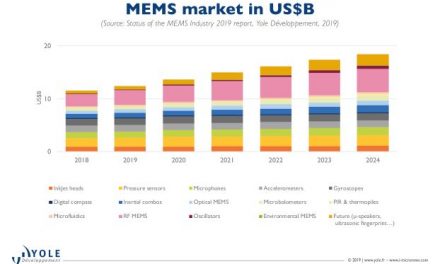DDR3 Consumer DRAM Prices Expected to Rise by 0-5% in 2Q22 Due to Rapidly Shrinking Supply, Says TrendForce
Intel and AMD will be releasing new CPUs that support DDR5 DRAM solutions for PCs and servers this year. In response, the DRAM industry led by South Korean suppliers is developing solutions to complement the arrival of the new CPUs. In the midst of the gradual shift to DDR5, DRAM suppliers will also scale back the supply of DDR3 solutions, according to TrendForce’s latest investigations. With Korean suppliers accelerating their withdrawal from DDR3 production, Taiwanese suppliers yet to kick off mass production using newly installed capacities, and Chinese suppliers falling short of their expected yield rate, the global supply of DDR3 solutions will undergo an impending decline. With respect to the demand side, however, not only has the supply of networking chips been ramping up, but material shortage issues are also gradually easing. As such, buyers are now procuring DDR3 solutions ahead of time, resulting in a tight supply and demand situation in the DDR3 market. TrendForce therefore expects DDR3 DRAM prices to recover from a bearish first quarter and undergo a 0-5% QoQ increase in 2Q22.
On the supply side, Samsung and SK hynix have begun scaling back their DDR3 production while also planning to declare EOL (end of life) for their DDR3 offerings, such as 1/2Gb and 4Gb chips. It should be noted, however, that Micron’s DDR3 solutions will not reach EOL even by 2026, meaning the company will still offer DDR3 solutions long after its two Korean competitors have stopped doing so, according to TrendForce’s understanding. Also worth noting is that Micron is migrating its DDR3 production to a US-based fab that mainly manufactures specialty DRAM solutions. Nevertheless, since this fab’s production capacity will be divided between products for consumer and automotive applications, TrendForce believes that the aforementioned migration will tighten Micron’s supply of consumer DRAM solutions because the US fab will give priority to automotive DRAM solutions that offer a higher gross margin and are currently enjoying surging demand.
Although Taiwan-based DRAM suppliers that focus on promoting DDR3 solutions, namely, Nanya Tech and Winbond, are in the process of capacity expansion, their new production lines will not be operational until 2023-2024. Hence, the contribution from the newly added capacities is not expected to drive up DDR3 supply substantially this year. Chinese suppliers, including CXMT and GigaDevice, are continuing to collaborate in DDR3 development, though their capacity increases and yield rate improvements have both fallen short of market expectations. After being added to the Entity List, JHICC, yet another China-based DRAM supplier, is now dealing with severe restrictions with respect to procuring equipment, making it difficult for JHICC to raise its wafer input. Furthermore, the company has no spare resources that can be allocated to R&D and pilot runs. As a result, JHICC still primarily manufactures DDR4 4Gb chips at its initial 25nm node, with no DDR3 production at the moment.
With regards to demand, DDR3 consumer DRAM is primarily used in end-devices such as STBs and networking products (e.g., GPON, routers, and modems), which do not require high-performance SoCs. While the foundry industry suffered a severe shortage of wafer capacities allocated to logic ICs in 4Q21, production capacities for relatively low-margin chips were noticeably impacted in turn. Along with a preexisting component mismatch situation, most manufacturers found themselves unable to assemble end-devices. Moving into early 2022, however, the supply of certain materials, including those used in foundry operations, saw a gradual improvement. As various components needed for device manufacturing became available after Lunar New Year, certain buyers have once again kicked off their consumer DRAM procurement activities.
In addition, DRAM spot prices shifted from a prior decline to a strong upturn at the end of last year as the Chinese government ordered a month-long lockdown in Xi’an. The ensuing price hike, which has lasted for two months, subsequently led buyers to procure even more DRAM ahead of time in anticipation of further price hikes. Hence, although the demand for end-products has yet to make a full recovery, buyers are now slowly and steadily procuring consumer DRAM in order to avoid either higher upcoming prices or even an inability to secure consumer DRAM inventory.
For more information on reports and market data from TrendForce’s Department of Semiconductor Research, please click here, or email Ms. Latte Chung from the Sales Department at lattechung@trendforce.com











